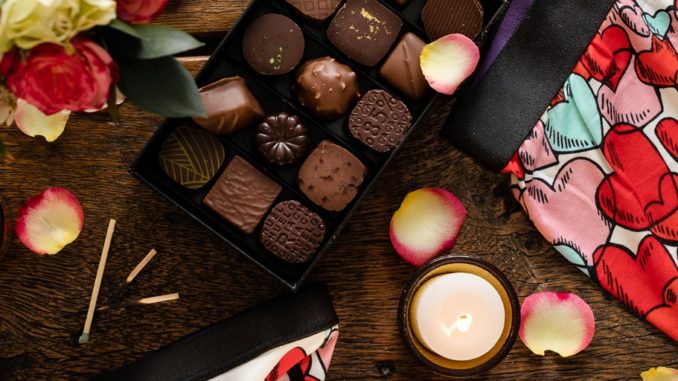

By ALYSON KAUFMAN
As if we haven’t spent enough money on the holidays, Valentine’s Day is around the corner. Grocery store and pharmacy shelves are packed with their huge stuffed animals and limited edition pink and red candy. This year, the average person is spending almost $200 on Valentine’s Day gifts – which is double what was spent 10 years ago.
Why are people spending more money on Valentine’s Day this year more than ever before? Is Valentine’s Day even about love in 2020? A holiday that started out as a dedication to Saint Valentine, who permitted marriages in Rome when they were outlawed, has turned into required flowers, chocolates and other expensive gifts. Today, a dozen roses can cost more than $40, while a nicer box of chocolates can cost anywhere from $20-$50. The average price of a greeting card tends to fall between $2-$4, but fancier cards can cost up to $10 each.
Matt Kaufman, 17, of River Edge, said, “All holidays are commercialized now.”
Christmas is all about buying the hottest toys for your kids, Halloween is all about buying the best costumes and decorations, and Valentine’s Day is seemingly about impressing your significant other, whether it’s with a dinner at a fancy restaurant, expensive jewelry, flowers or candy.
According to the National Retail Federation, the average person is expected to spend $196.31 on Valentine’s Day this year. In 2019, the average was only $161.96. This brings in a grand total of $27.4 billion spent on Valentine’s Day, up from last year’s $20.7 billion.
The Industries Profiting the Most
Among the retail industries that see the largest sales boost around this holiday include greeting cards, candy, flowers, clothing/lingerie, gift cards, and jewelry. According to Fox Business, a whopping $3.9 billion of this Valentine’s Day spending goes towards jewelry, $2.1 billion goes towards clothing/lingerie, $1.9 billion goes to flowers, $1.8 billion goes to candy, $1.3 billion goes to gift cards, and $933 million goes to greeting cards.
Shoppers are spending more on their significant other, family members, friends, coworkers, children’s classmates and even pets. As people are getting older, they are in a position to be able to spend more money and are meeting more people to spend it on. The age group that spends the most amount of money is the 35-44 year old group, with the 18-24 year old group spending the least.
Many people today expect elaborate gifts, and high expectations put pressures on significant others. “We used to exchange gifts, but recently we started to set the bar higher with events like a trip or tickets to a Broadway show,” Kerri Bartnicki, 21, of River Edge, said, “With giving gifts, I feel that my expectations have changed over the years.”
Similarly, with many pressures’ society is faced with today, social media plays a part in users’ fear of failure and missing out. When people see all of their family and friends celebrating Valentine’s Day on social media, they feel inclined to take part in it as well. Since the rise of smartphones, Americans specifically have increased their materialistic behaviors, which has carried out through their relationships. If you don’t post about the special gifts you got for Valentine’s Day, did you even get them?
valentine’s day is just another useless day the government created to keep the flow of money moving after the holidays. change my mind
— sotsuB (@d_boost) February 6, 2020
I found the same statistic about how much people are expected to spend this valentines day – its insane! The piece was broken up very nicely with the subhead, making it easy to follow and digest as a reader. The interview with (miss) Kerri Bartnicki sums up your piece, and ending on a question was a great move. Nice feature story!